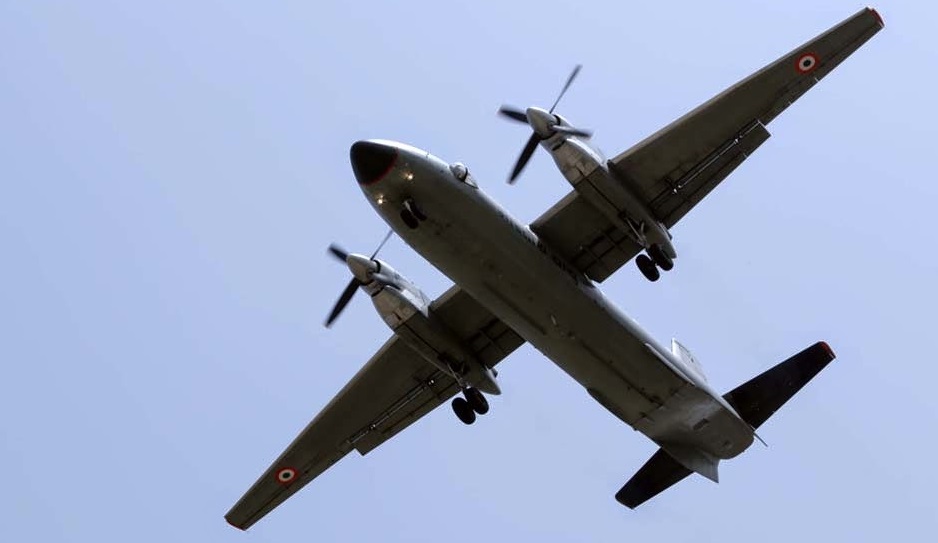
Ten days into a fruitless search for the Indian Air Force’s missing An-32 transport in the Bay of Bengal, a colossal irony has just come to light: Livefist learns that the IAF was engaged in trials for crucial underwater locator beacons (ULB) — transmission modules designed to send out powerful pings from even oceanic depths — and was in the process of finalising a choice when the accident happened. Why the IAF’s Sulur-based An-32s were cleared for flight over the Bay of Bengal without these basic bits of emergency kit is a question the IAF will now face, and may lead to bigger questions about safety doctrine. But what we do know now is that the IAF was aware of the requirement and was working to quickly acquire the equipment. The accident of July 22 has immeasurably amplified the irony.
It’s time to face facts. It could takes weeks, maybe months — or more — to locate the Indian Air Force Antonov An-32 that went missing over the Bay of Bengal, nearly 300 km from land ten days ago. The truth is, the comprehensive hunt for the missing airplane — with ships, aircraft, satellites and a submarine — is a consummately blind one. The missing An-32 didn’t have emergency transmission equipment that would allow search crew to zero in on the signal. In simple terms, the doomed aircraft has been totally silent ever since it impacted water in the morning of July 22. And the multiple crews searching for the otherwise robust and reliable aircraft and the 29 people on board, have odds impossibly stacked against them. As the crews trudge through a second week of painstaking combing of choppy waters in the Bay of Bengal, experts Livefist has spoken to believe it could be a miracle if the aircraft is located anytime soon. In the light of plentiful speculation and conjecture this last week in the Indian press about the safety of the An-32 fleet and a guessing-game over whether it was equipped to fly over water, here’s what we know for sure:
- The An-32 that went missing on July 22 had three types of emergency transmission systems: One was an Emergency Locator Transmitter (ELT) in the aft section that activates either by G-forces during ground impact or if the aircraft crosses a stipulated vertical speed, indicating a possibly uncontrolled dive. The second was an ELT in the cockpit that required manual activation, or would be activated in contact with saline water. Neither of these two emergency transmission systems is designed to send signals from below the water surface. Their transmissions would be quickly scattered and nullified by salt water. If the An-32’s tail-located ELT didn’t activate during its sudden dive from 23,000 feet, it’s possible the aircraft wasn’t entirely out of control. Also, significantly, neither has the battery back-up to transmit a signal for more than 72 hours.
- The An-32s in IAF service don’t have underwater locator beacons (ULB), detachable modules integrated with the aircraft’s flight data recorder. Such a system would transmit a low frequency ping from depths. More importantly, such a system is designed to transmit for up to 60 days or more — precisely the kind of window search teams need to hunt for an aircraft in water. The IAF’s C-130Js, C-17s and new Mi-17-V5s currently sport ULBs. Until the IAF completes the trial and acquisition process for new ULBs for its An-32s and other fleets, Livefist learns it has decided to integrate ULBs from existing fleets onto some of its An-32s so its over-water courier flights can continue. A stopgap operation in the traditions of the Indian military, forced frequently to fight with what they have, while waiting often endlessly for even basic emergency/safety equipment.

This one I just can’t fathom! A twin engine reliable aircraft disappears without as much as a Mayday signal?I am glad Shiv that you have put some perspective on the scale of the mission for the search teams. In the raging seas its the proverbial needle in a haystack .
It’s time that GOI takes a smart decision….Reliance and Ukranian state-owned Antonov has formed a JV to manufacture Regional transport aircraft in India….This clearly indicates that Reliance should be given an opportunity to costruct An-148 and it’s military variant An-178 in India in a JV with Antonov.
http://economictimes.indiatimes.com/…/arti…/52266270.cms
Ukraine is going through a tough crisis and It’s the best time for Indian Private companies to form JV’s with Ukranian companies to get as much as T-O-T as possible.
Indian companies can attract Ukranian Engineers and scientist to work for them, It’s all about paying the Right amount of money….specially for people whose Nation is going through such a big crisis.
Ukraine is undergoing a Civil War as well as a Conflict with Russia…..Every conflict always creates an opportunity and It’s the best opportunity for India.
An-178 matches very closely to the specifications of IAF’s desired MTA.
http://ukroboronprom.com.ua/…/medium-transport…
If GOI provides this opportunity to Reliance then I’m very sure that Other Indian Companies will also understand the opportunity that is present for India in the Ukranian Conflict…….Ukraine also manufacutres engines for Chinese Tanks…this is also one sector where India can achieve a great level of Technological cooperation.
I have noticed a reduced frequency in your posts. I am not complaining, but I hope you are healthy and if you are, stay that way. We need quality folks like you, so I hope you are healthy and keep reporting (reduced frequency is just fine) for lot longer than what I will be around to read.
Wish you all the best
Thank you, Sir! I’m well and promise to ramp up.